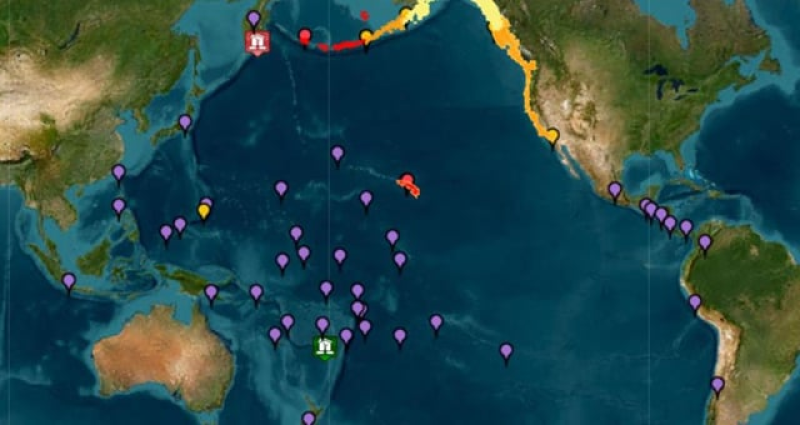- CA Yunus pays homage to Liberation War martyrs on Victory Day |
- Bangladesh capital market extends losing streak for second day |
- Bangladesh celebrates Victory Day Tuesday |
- 'Different govts presented history based on their own ideologies': JU VC |
Powerful Quake Off Russia Triggers Pacific Tsunami Alerts

A powerful 8.8-magnitude earthquake struck off Russia's Far East on Wednesday, triggering tsunami waves that hit parts of Russia and Japan and prompted widespread warnings across the Pacific.
Russia’s emergencies ministry reported that the port town of Severo-Kurilsk, home to around 2,000 residents, was flooded by a tsunami. The population had been evacuated beforehand. Videos on Russian social media showed buildings submerged under seawater. Several people were reportedly injured, though none seriously.
In Japan, live broadcasts showed people evacuating coastal areas by car and on foot, especially on the northern island of Hokkaido, where the first wave—30 centimetres (one foot) high—was observed. The Japan Meteorological Agency initially forecast waves of up to one metre, later upgrading that to three metres for wide stretches of the northern and eastern coastline, including smaller islands and areas as far south as Wakayama.
The quake was the strongest in Russia’s Kamchatka region since 1952, according to the Geophysical Service of the Russian Academy of Sciences. Its epicentre was near the same location as the massive 9.0 quake that year, which triggered a Pacific-wide tsunami.
At least six aftershocks followed, including tremors measuring 6.9 and 6.3. The U.S. Geological Survey initially recorded the quake at magnitude 8.0 but later revised it to 8.8.
The U.S. Tsunami Warning Centers warned of waves exceeding three metres above tide level along some coastal areas of Russia, the northwestern Hawaiian Islands, and Ecuador. Waves between one and three metres were possible along parts of Chile, Costa Rica, French Polynesia, Guam, Hawaii, and Japan. Lower-level waves, up to one metre, were also forecast for Australia, Mexico, New Zealand, Colombia, Tonga, and Taiwan.
Authorities in Japan issued strong evacuation orders. Broadcaster NHK interrupted programming with urgent warnings: “Tsunami! Evacuate!” and urged coastal residents not to approach the sea. Chief Cabinet Secretary Yoshimasa Hayashi urged immediate evacuation to higher ground or designated safe buildings. Train services along coastal regions, including Chiba, Yokohama, and Fujisawa, were suspended.
At the Fukushima nuclear plant—devastated by the 2011 earthquake and tsunami—workers were temporarily evacuated as a precaution, the operator confirmed.
Alerts also went out across the U.S. West Coast, from Alaska to California, where mobile phone warnings were issued. The Philippines' seismology agency warned that tsunami waves up to one metre could hit its eastern coastline between 1:20pm and 2:40pm local time, advising residents to move inland and for fishermen to remain in deep waters until the advisory is lifted.
Authorities across the Pacific continue to monitor the evolving situation and urge vigilance as the risk of further waves remains.

